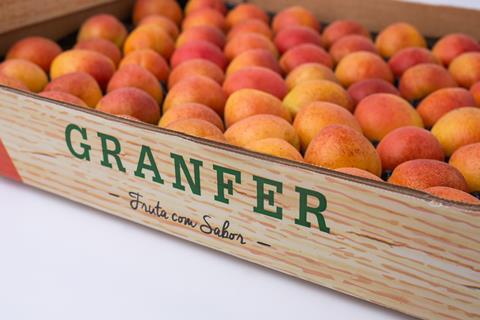Tomás Ferreira of Granfer, the country’s biggest stonefruit producer, looks at the outlook for the new campaign

Hail in parts of northern Portugal has led to a slight fall in apricot volumes this year for Granfer, the country’s leading stonefruit producer. However, the harvest in Alentejo, Granfer’s other main area of production further to the south, is shaping up nicely according to head of commerce and marketing Tomás Ferreira.
“ With regard to quality, it depends on rainfall and temperature patterns for the rest of May – if we continue to experience the low temperatures we’ve seen during April, it could impact both quality and overall volume,” he tells Fruitnet.
The low temperatures could also impact demand, which typically goes up as the weather gets warmer. With the European crop expected to weigh in at 523,986 tonnes this year –unchanged on last year but 2 per cent up on the five-year average for 2018-2022, Ferreira says the market will be well supplied throughout the summer months.
“The quality is there, so we expect to a to see a regulated, balanced market. Last year, prices held at quite good levels at beginning of the season then dropped off a little and I expect this season to be similar,” he notes.
The largest share of Granfer’s apricot production is located in Cova da Beira in the north of Portugal, where the terroir and growing conditions are ideal for the cultivation of this crop. The rest comes from Alentejo and Extremadura across the border in Spain. Harvesting here kicked off in mid-May, about a week earlier than usual, with Ninfa, a round, yellow/orange variety, and continues with Kioto, a bright orange variety with an attractive red blush. Together, they account for the bulk of Granfer’s apricot output.
Ferreira notes that a key trend in recent years has been towards greater market segmentation between yellow/orange varieties and red varieties. He says the latter help create excitement and generate demand across the category.
“Consumers like the product – we’re seeing more and more interest in it. But it’s getting harder to produce – they say that some fruits are made for the consumer but not for the producer and this is very much the case with apricots,” he says.
“Of all stonefruit, it is the most delicate and the most high-risk to grow. You can have good production one year and a bad crop the following year. It’s very hard to make apricots profitable.”
To mitigate its risk, Granfer has its own farms and works with contracted growers across a number of different production zones so that it can minimise the risk of a bad harvest.
“I think the market should be prepared to pay a bit more for the fruit because otherwise I don’t see many producers interested in pursuing this venture in the long-term,” Ferreira continues.
More too should be done, he believes, at retail level when it comes to displaying the fruit in-store and educating consumers about its properties, particularly those in northern European markets where there is a general lack awareness about the seasonality of the product.
“When you eat one of our apricots you’re talking about something that was harvested three days ago and arrives fresh on your table. It’s completely unique and cannot be compared with a piece of fruit that has been imported from halfway around the world,” he says.
“In Portugal, Spain or Italy we celebrate the fact that a product is in season. This creates excitement and generates more sales.”
According to Ferreira, the arrival of the private equity funds has had a major impact on Portugal’s fruit industry. “If you drive round the Alentejo region you see that the landscape is changing. There are fewer smaller growers, and new investment is focused on less risky crops like almonds or olives,” he says.
“But their contribution to the local economy is not the same. At the peak of the season we have 150 people working on the farm, whereas on an almond or olive farm you’ll have four of five people because the industry is mechanised.
“That’s just the way things are. But I want to promote the uniqueness of our industry and our product. It’s labour intensive but it makes a significant contribution to the local economy. We are creating jobs for the next generation.”



